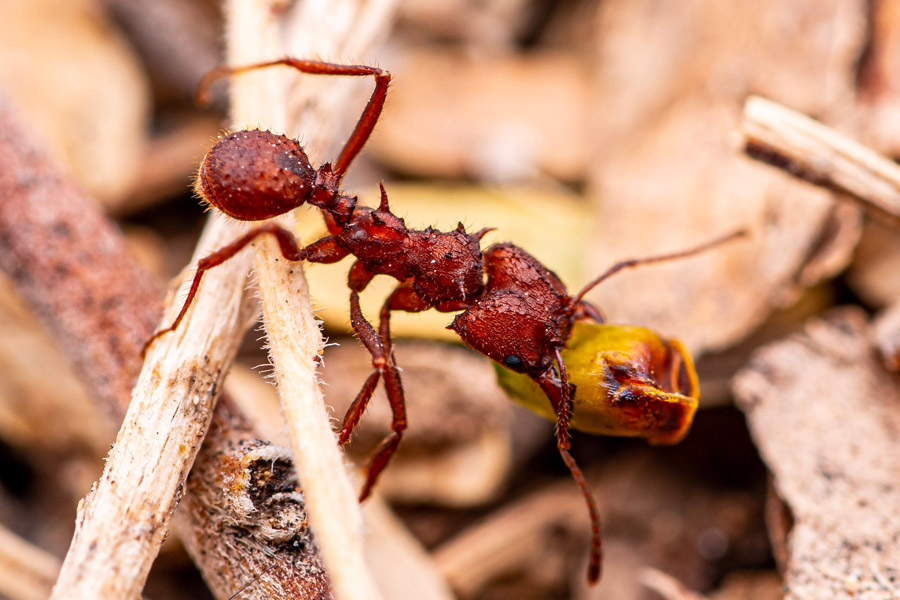The desert leafcutter ant, Acromyrmex versicolor, is an amazing creature. I wrote about them two years ago, but their recent activity in my front yard inspired me to revisit the topic. I noticed a perfectly straight line of leaf bits stretching across my driveway and up toward my front door. My yard and driveway are all natural desert terrain.
This sight made me wonder: how do these small creatures create such a perfect line over what must be an immense distance for them? I also wondered why they don’t simply build their nest closer to the leaf source, but that’s a question for another day! It turns out that these ants are known for their navigational skills and use several techniques to achieve these remarkable results.
Life on the Ant Highway
When a worker ant finds a good food source, she lays down a chemical trail, or pheromone trail, on her return journey to the colony. Ants use these compounds and their strong sense of smell to communicate with one another. The trail is then reinforced by other ants as they follow it to the food source, collect their leaf fragments, and head home.
If the food source is especially good, the multitude of trips back and forth creates what I call an “ant highway”. But simply walking on the path isn’t the only thing the ants do; they also maintain it, clearing debris and shifting soil to level the path.
So why do the ants put in all this effort? The shortest distance between two points is a straight line. The highway minimizes travel distance and time, which allows the ants to make more trips and collect food more efficiently. This also reduces the time the ants are out in the open, where they are vulnerable to predators like horned lizards or dangerous weather.
Cultivating a Fungus
If you were to look at photos of the trail, you would see it’s lined with discarded leaf pieces, creating a “green leaf road”. There is also a pile of leaves around the den’s entrance. Nobody knows for sure why they do this, but there are several theories. One theory suggests that a leaf that dries out too much on the way back may not be suitable for the fungus they cultivate. The environment inside the den requires a very specific humidity level, so workers might drop off leaves at the entrance for other ants to select the ones with the appropriate moisture. Another theory suggests that tired workers simply drop their leaves along the way or that they drop them at sunset to “go to sleep”. I’ve never seen a sleeping ant, but I’ll certainly keep an eye out for one!
Even after observing my yard’s leafcutter ants for fifteen years, I still can’t predict where they’ll build their next den or what motivates them to move periodically. I also wonder what makes them choose one plant over another as their optimal “crop source”.
Saying that the ants are collecting “food” isn’t quite accurate. They are gathering the plant material to grow their actual food: a fungus. It’s believed that the fungus can even communicate to the ants what kind of leaves are needed for its optimal growth. That’s impressive interspecies communication!
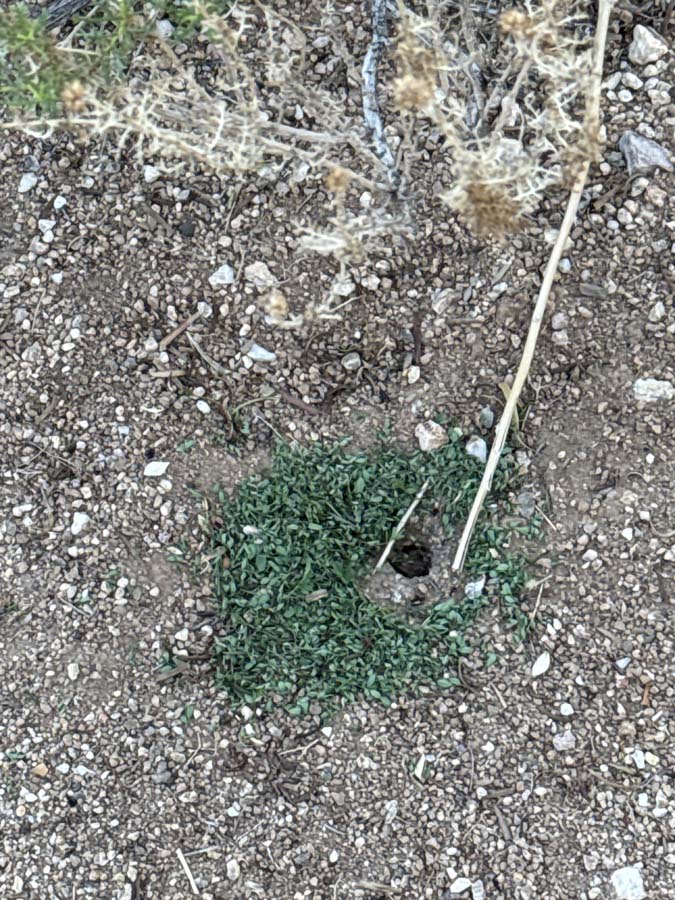
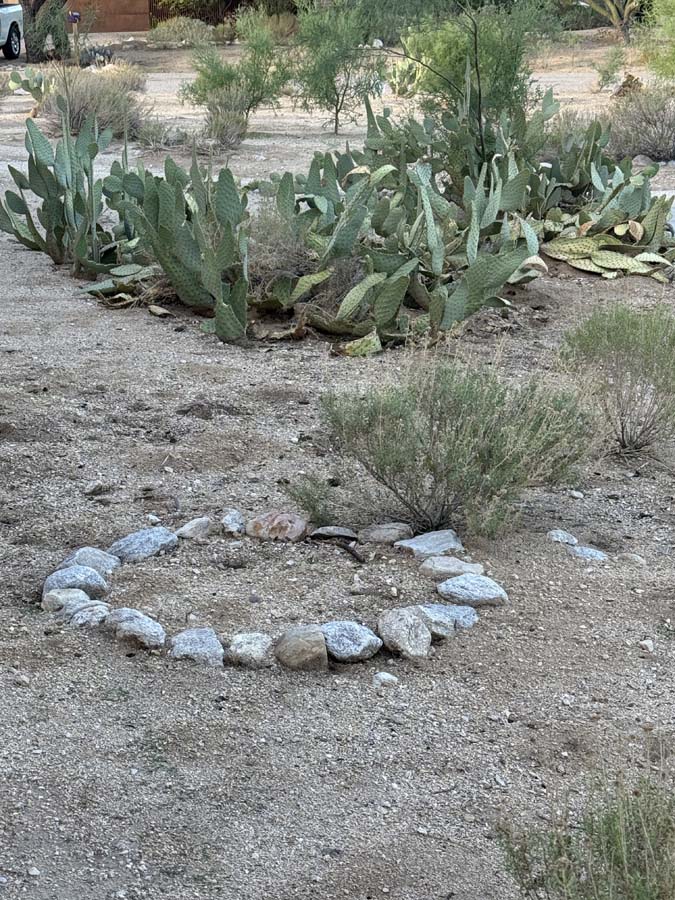
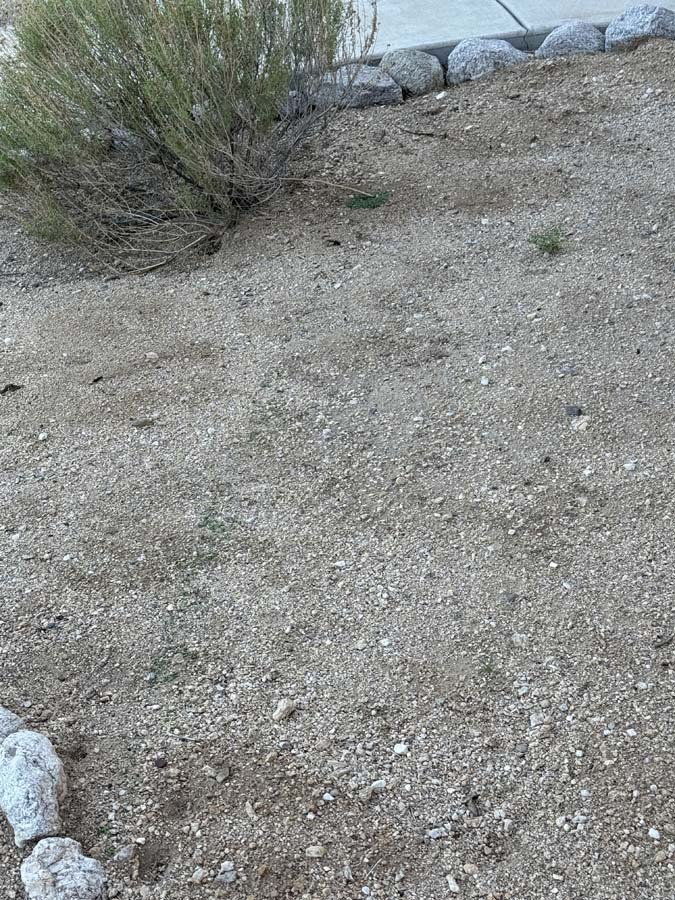
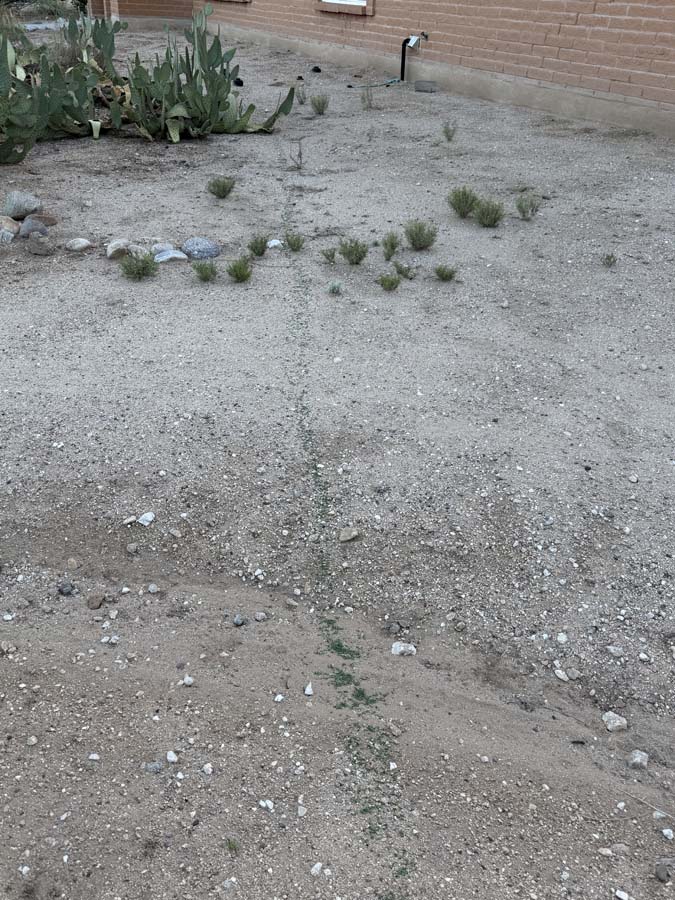
Let’s Get Scientific!
Explore the world of desert wildlife with my science-based children’s workbooks.
